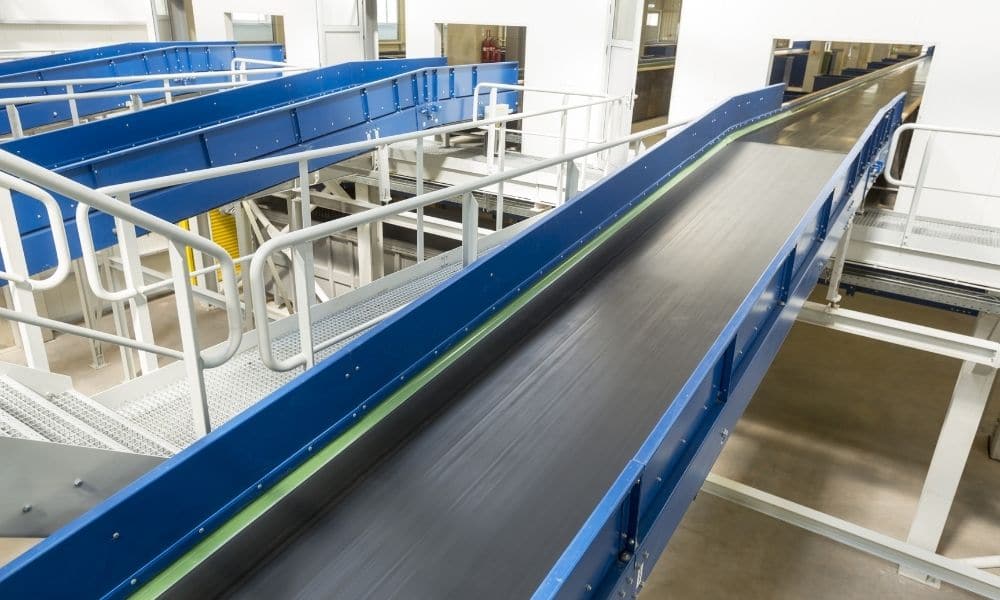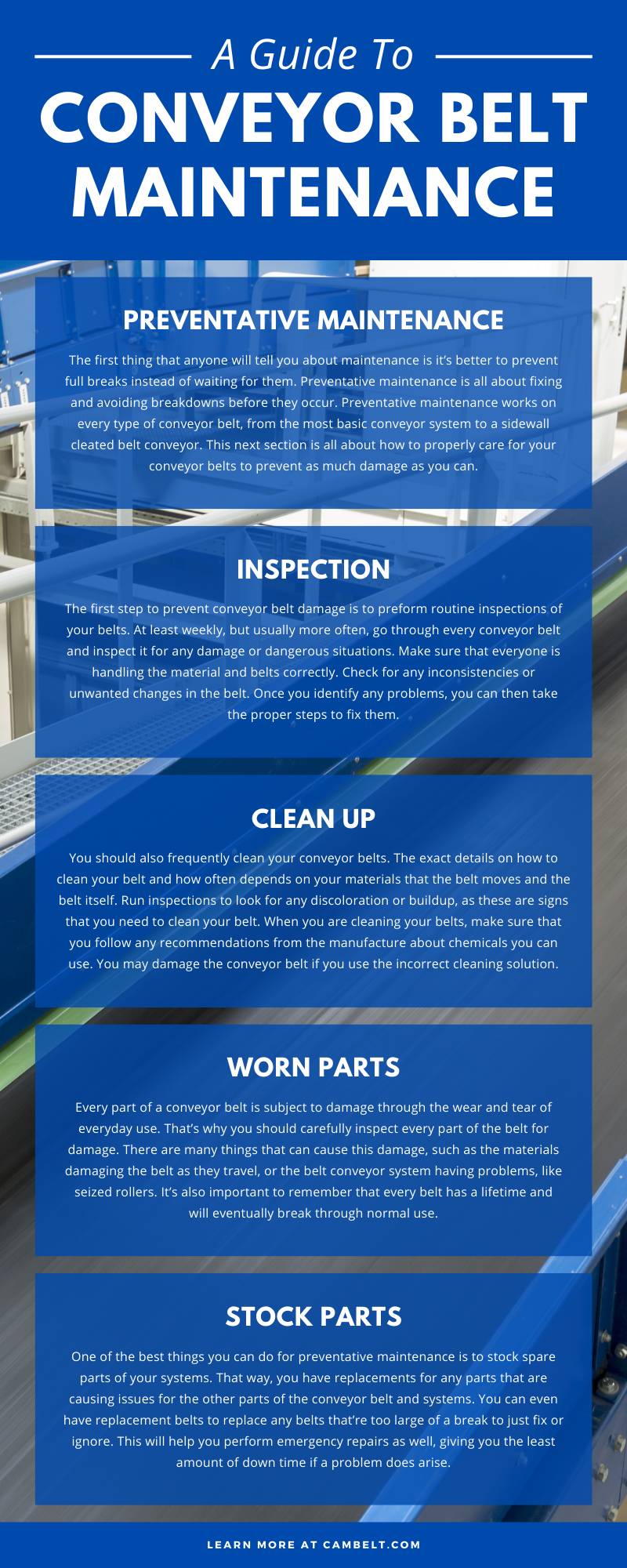
Conveyor belts are the life blood for many different warehouses and production facilities. Without them, productivity would drop immensely and slow down all workflow. That’s why you need to run constant and in-depth maintenance on all your conveyor belts. You don’t want them to break down and slow down your workdays. To help you take care of your conveyor systems, here is a guide to conveyor belt maintenance.
Preventative Maintenance
The first thing that anyone will tell you about maintenance is it’s better to prevent full breaks instead of waiting for them. Preventative maintenance is all about fixing and avoiding breakdowns before they occur. Preventative maintenance works on every type of conveyor belt, from the most basic conveyor system to a sidewall cleated belt conveyor. This next section is all about how to properly care for your conveyor belts to prevent as much damage as you can.
Inspection
The first step to prevent conveyor belt damage is to preform routine inspections of your belts. At least weekly, but usually more often, go through every conveyor belt and inspect it for any damage or dangerous situations. Make sure that everyone is handling the material and belts correctly. Check for any inconsistencies or unwanted changes in the belt. Once you identify any problems, you can then take the proper steps to fix them.
Clean Up
You should also frequently clean your conveyor belts. The exact details on how to clean your belt and how often depends on your materials that the belt moves and the belt itself. Run inspections to look for any discoloration or buildup, as these are signs that you need to clean your belt. When you are cleaning your belts, make sure that you follow any recommendations from the manufacture about chemicals you can use. You may damage the conveyor belt if you use the incorrect cleaning solution.
Worn Parts
Every part of a conveyor belt is subject to damage through the wear and tear of everyday use. That’s why you should carefully inspect every part of the belt for damage. There are many things that can cause this damage, such as the materials damaging the belt as they travel, or the belt conveyor system having problems, like seized rollers. It’s also important to remember that every belt has a lifetime and will eventually break through normal use.
Stock Parts
One of the best things you can do for preventative maintenance is to stock spare parts of your systems. That way, you have replacements for any parts that are causing issues for the other parts of the conveyor belt and systems. You can even have replacement belts to replace any belts that’re too large of a break to just fix or ignore. This will help you perform emergency repairs as well, giving you the least amount of down time if a problem does arise.
Common Issues
Outside of preventive maintenance, there are other things you will need to do to keep your belts working. These other issues can happen even when you preform preventative maintenance; they just happen a lot less often. During your routine inspections, you should keep you eyes out for any of these problems as well as having workers keep an eye out for them during the normal workday. It’s best to catch these problems as soon as possible, otherwise they will cause more damage to your conveyor systems or your products.
Belt Problems
- A common issue with a belt is that the alignment of it becomes off. There are several things that can cause a misalignment, such as product overload, wear and tear, and even belt conveyor malfunction. You should look for these misalignments often and check if you can fix it with a simple adjustment or if you need a new belt.
- Another problem with belts is risk of belt slippage. It’s not all too unusual for conveyor belts to slip or skip its movement. This has several causes but the most basic deals with how the belts usually work. They rely on constant tension on either end of the belt to apply torque to the belt and rotate it. However, as a belt wears down, it no longer properly fits on the conveyor system. This causes a loss of tension which, in turn, causes slippage. It can be difficult to fix this problem and you might need to replace the whole belt with a new one.
- Although it can be frustrating. Belts often develop tears during their lifetime. The slow accrual of damage and wear can weaken the belt’s materials until it finally tears. Most tears start small, but they will grow in size if you leave them alone. Look for any signs of tears and weakened materials during your inspections to catch this problem before it becomes dangerous for everyone. The materials you move often have a large impact on tears in conveyor belts, as they hold the most influence on your belt’s condition. Luckily, you can often just have a professional repair the belt without needing to replace the whole thing if the tear is minimal.
- Material buildup isn’t exactly a belt failure but does influence how a belt functions. As you move materials on conveyor systems, they will slowly accumulate residue on your conveyor belts. This is something you can usually clean up with frequent cleaning sessions. But sometimes buildups happen in places you don’t expect. These buildups can cause a lot of damage and clog up your whole production as they stop materials from flowing properly. These buildups can also cause tears and increase wear on your conveyor systems if left alone.
Make sure you are checking every area that deals with materials or products you move to prevent buildup. It’s best to frequently check places of high risk, like material transfer locations between conveyor belts. Once you find buildup, all you need to do is clean it just as you do with the rest of your system.
Now, these are just the more common problems you will see in conveyor belts. There are other issues that can and will arise, but by using this as a guide to conveyor belt maintenance, you should have no problems reducing any incidents and finding most problems before they become too big to handle.

